Porsche 911 Turbo vs Mercedes-AMG GT S

When contemplating the best all-around sports cars, the rear-engined darling from Stuttgart inevitably comes up. Having been refined from a “widowmaker” into a comfortable, accommodating and capable everyday driver, the Porsche 911 Turbo for sale tops the list of multitaskers. Featuring four wheel drive, supple suspension and incredibly docile road manners, it offers a level of traction that seems unshakable. In most enthusiast’s minds, practical considerations make the 911 Turbo more of comfy cruiser than an out-and-out sports car.

But in reality, it’s a bit more complicated than that. The 911 Turbo is almost alone in its ability to switch roles between turbocharged hustler and executive transporter. When taken to task on track, the Porsche shows it has never forgotten its roots and continues to deliver, albeit in a very composed, understated fashion. Since few cars really fit its specific niche, there are few which challenge the 911 Turbo’s crown, but Mercedes has risen to the task and unveiled something with the ability to cruise the riviera as well as set a blistering lap time.

The new Mercedes-Benz AMG GT for sale is the first offering from Mercedes since the SLS AMG that fits into the high-end sports coupe category. Unlike the SLS, the GT-S is shorter, smaller, has a turbocharged motor and, while retaining a bit of the glamour of its bigger brother, fits into a more modest price range – beginning at a not-so-paltry $130,000 – which puts it in roughly in the same bracket as the 911 Turbo.
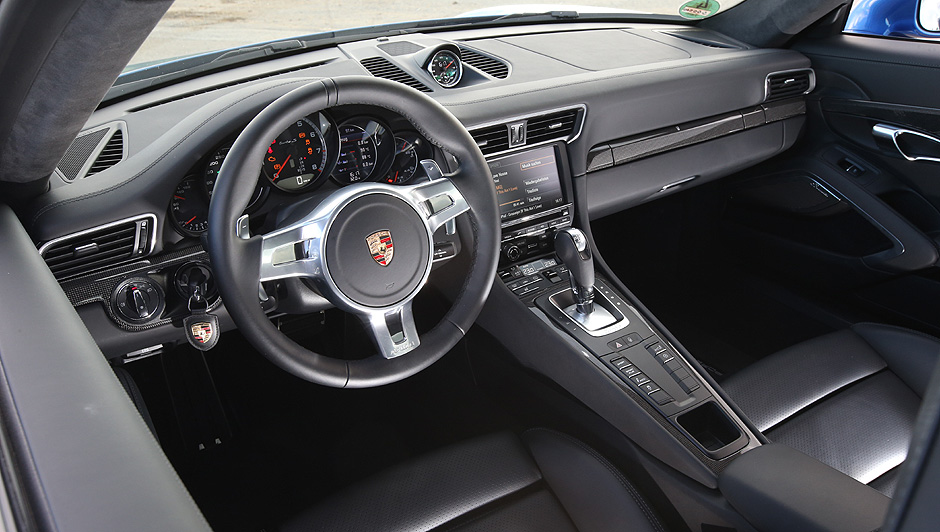
One can see further similarities with the interiors. Take a gander inside the 911 and it is a very special blend of sporty and sophisticated. Because of the diminutive size, one might expect the GT-S to have an interior like that seen in the C-Class. Not the case here. The GT-S’ interior is gorgeous, with air conditioning vents reminiscent of the Pagani Huayra and kind of upholstery you would expect in a top-tier Benz, but somehow, it isn’t fussy. Despite the sumptuous leather and fine stitching used, the acutely slanted dash, bolstered seats and thick-rimmed steering wheel sitting in the driver’s chest give the car a sporty, focused vibe and a definite sense of occasion. These two are plush and well-upholstered but with a noticeable edge. It’s an environment that invigorates on track and relaxes on the drive home.
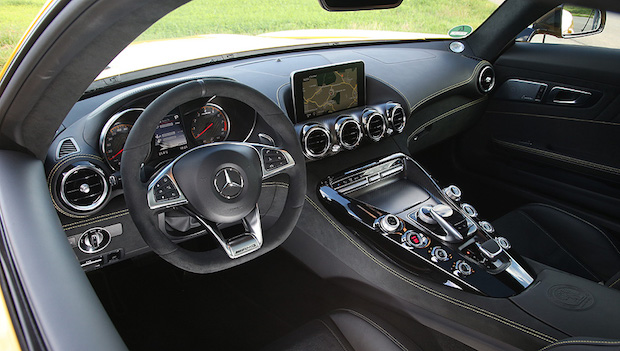
Their motors share a few things in common, too. Both brutal yet progressive, their turbocharged engines provide a huge amount of surging torque that pulls from low revs all the way to redline without much drop-off. The Mercedes’ four-liter V8 produces 503 hp and 479 ft/lb of torque which help it sprint to 60 in just under four seconds whereas the Porsche’s flat-six offers 513 hp and 487 lb/ft of torque. Thanks to its four wheel-drive, the Porsche gets to 60 half a second faster than the Benz. Coupled to these miniature nuclear power plants are dual-clutch transmissions that shift gears almost instantaneously, though the PDK gearbox in the Porsche allows for quicker downshifts.
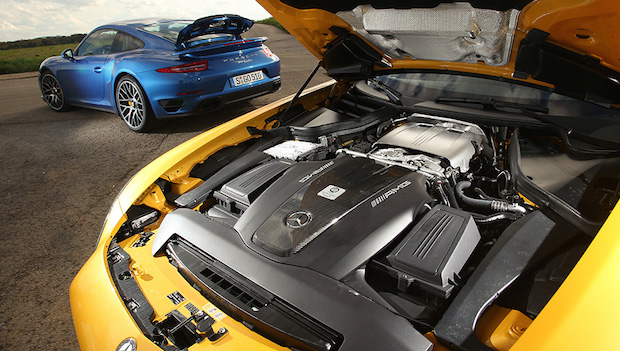
Where these two begin to differ begins with their drivetrains. The Porsche benefits from its near-unbreakable traction: with four wheel-drive and massive tires at all four corners, boot it from a standstill and the car just goes without any fuss. Predictably, the Mercedes’ traction is not as good with a front-engine, rear wheel-drive layout, but still puts power to the ground very effectively – floor it in second gear and the rear tires will translate that power into forward movement without much wheelspin.
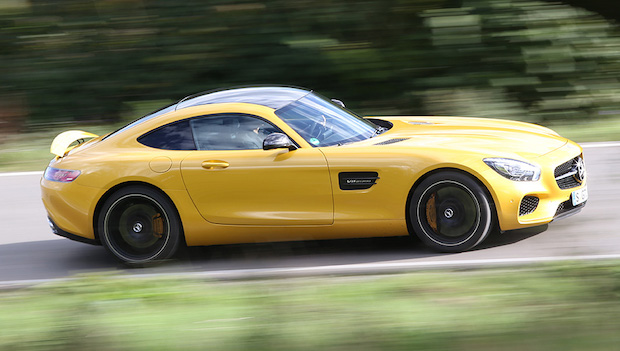
When it comes to balance, the two are as different as can be. The ultra-incisive front axle on the Mercedes gives the driver unparalleled confidence when hustling into corners. Going along with the sharpened front end is the tail-happiness expected from an AMG. With so much power and only two driven wheels, the Benz is always willing to drift, but does so with great poise and stability. It is not a wayward or difficult to drive and unlike older AMGs, doesn’t just use oversteer as a party trick.
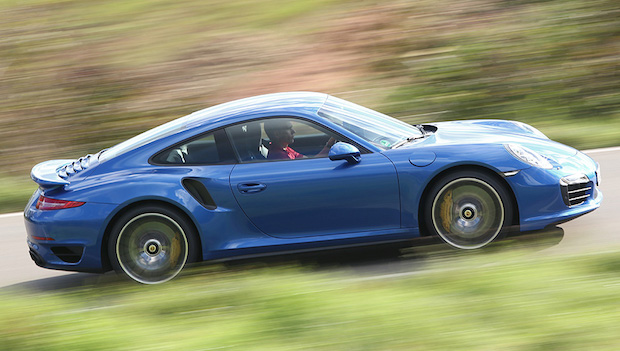
It’s difficult to talk about the Turbo’s handling without addressing the technical aspects at play. With a longer wheelbase and four wheel-drive, the 911 Turbo has a tendency to understeer in slower corners, though the newly-added four wheel-steering helps with a bit of rotation. The Porsche is generally geared towards safe, predictable handling and unless you’re on track and thrashing the car, it’s difficult to break the tires loose. Due to the new electronic steering the Porsche does not have the same amount of feel through the front tires as the Mercedes, but the chassis is nonetheless very communicative and reassuring.
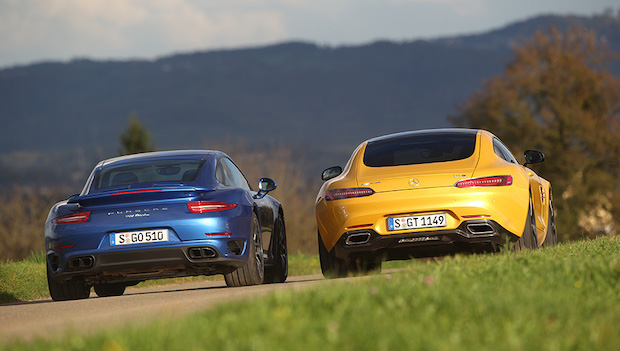
When it comes down to pure performance, the 911’s four wheel-drive allow it to effortlessly exploit its power whereas the AMG, despite its impressive traction, simply cannot match the Porsche, especially in the slower sections. Yet, the AMG offers a level of unmatched drama and playfulness. The 911 is the quicker car, but the Mercedes is not far off the pace. With superlative traction and excellent road manners, the 911 Turbo covers ground in serious, unflappable fashion. All the while, the GT-S follows closely, smirking the whole time.
